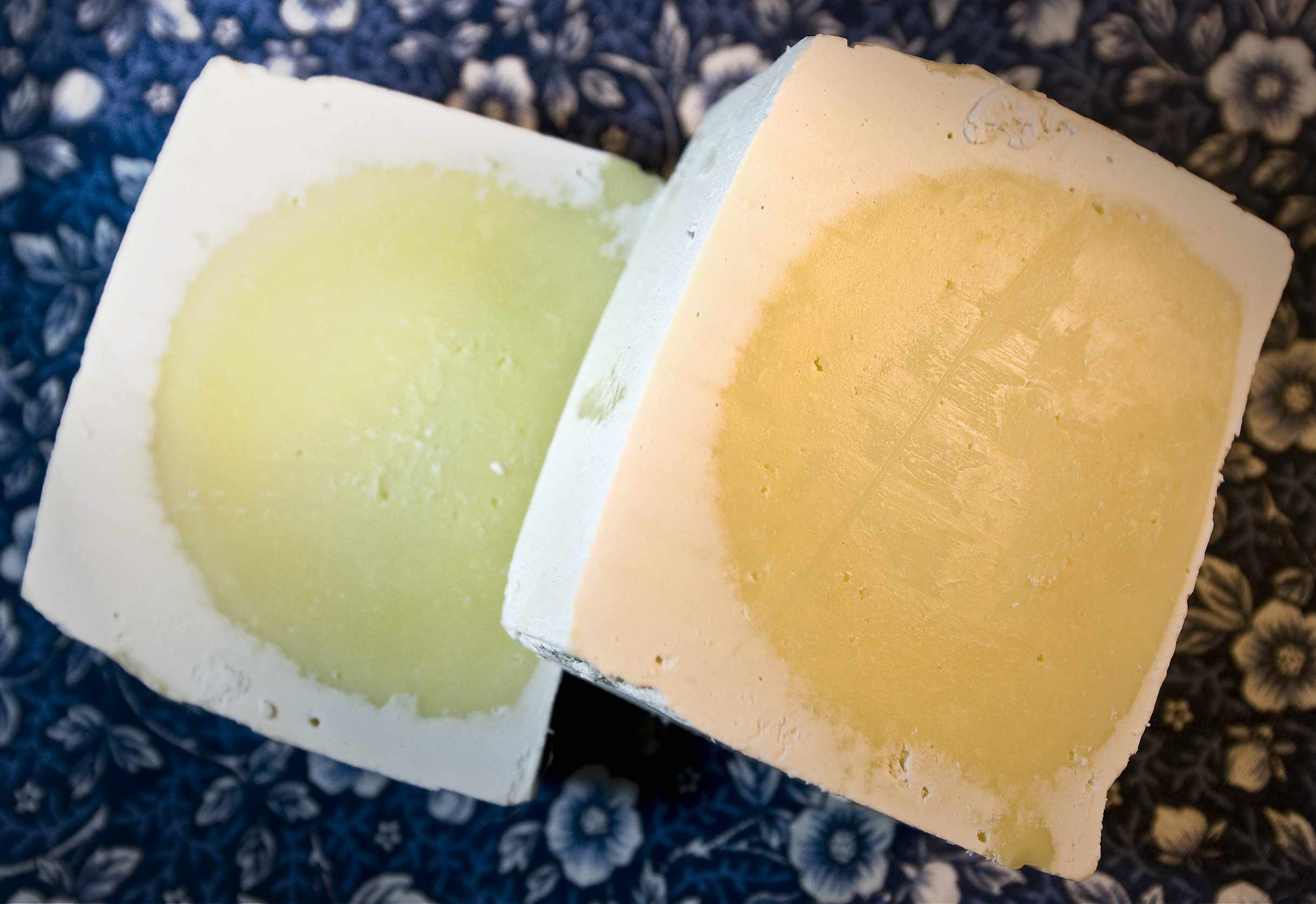Your cart is currently empty!

Soda Ash is not Soda Ash
Soda ash is another name for white chalky coating of homemade soap, that looks like mold on Camembert cheese.
Possible reasons for soda ash and mechanisms of its formation were described in the previous chapter. I also suggested several ways to avoid soda ash and how to remove it.
This harmless wonder presents a challenge especially for makers of soap who also sell it.

This powdery layer of uncertain nature is believed to be soda ash or sodium carbonate synthesized by a reaction of sodium from lye and carbon dioxide from the air. It’s not.
Soda ash is not sodium carbonate or washing soda, at least in my homemade soap.
A simple vinegar test proves it.
Vinegar Test for Soda Ash on Soap
Perhaps you know that a chemical reaction between vinegar and baking soda produces bubbles. Some cake recipes require to mix vinegar and baking soda instead of using baking powder. Many of you might have done it.
Just like baking soda and baking powder, soda ash also produces bubbles when mixed with vinegar.
The chemical reaction is very simple.
Acetic Acid + Sodium Carbonate –> Sodium Acetate + Water + Carbon Dioxide
2 CH3COOH + Na2CO3 –> 2 CH3COONa + H2O + CO2
I am going to get some soda ash from the box.

Carbon dioxide is the culprit behind the bubbles just like in carbonated drinks or Alka-Seltzer.
To demonstrate the bubbles, I have white vinegar in one spoon and soda ash in the other spoon.

Soda Ash and Vinegar Reaction
The picture on the right shows the bubbles when soda ash is mixed with vinegar.
And now let’s do the vinegar test on the soap with “soda ash” on it.

Vinegar on Soap with “Soda Ash”

I inundated my soap bar with vinegar, but it ran off before I had a chance to click my camera. As you can see from the puddle in the left corner of the picture above, this white substance on soap does not make any bubbles when it’s in contact with vinegar.
Ok, may be there is some film that separates soda ash from vinegar? I am going to scrape off some of that white substance and put it into the vinegar.

Here is my vinegar. This time, I poured it in a clean, empty, plastic spice jar.
Here are the shavings of the white stuff. No, not the snow. Let’s call it “soda ash in question”.


I took these shavings from different parts of the soap.
Quite frankly, these shavings look and feel just like soap. Here they are, in the vinegar.
If you see any bubbles, they are incidental individual bubbles or air introduced when the shavings were falling down into the vinegar.
There is no foam, no bubbles, and no Alka-Seltzer effect.
After a few minutes of vigorous shaking, I have this mucky suspension.
This substance does not react with vinegar to form a clear salt solution.
The so-called soda ash effect that happens on some handmade soaps is most likely the same soap, that might have crystallized and has some salts in it. But it’s not soda ash, not baking soda, or even sodium hydroxide (lye).


